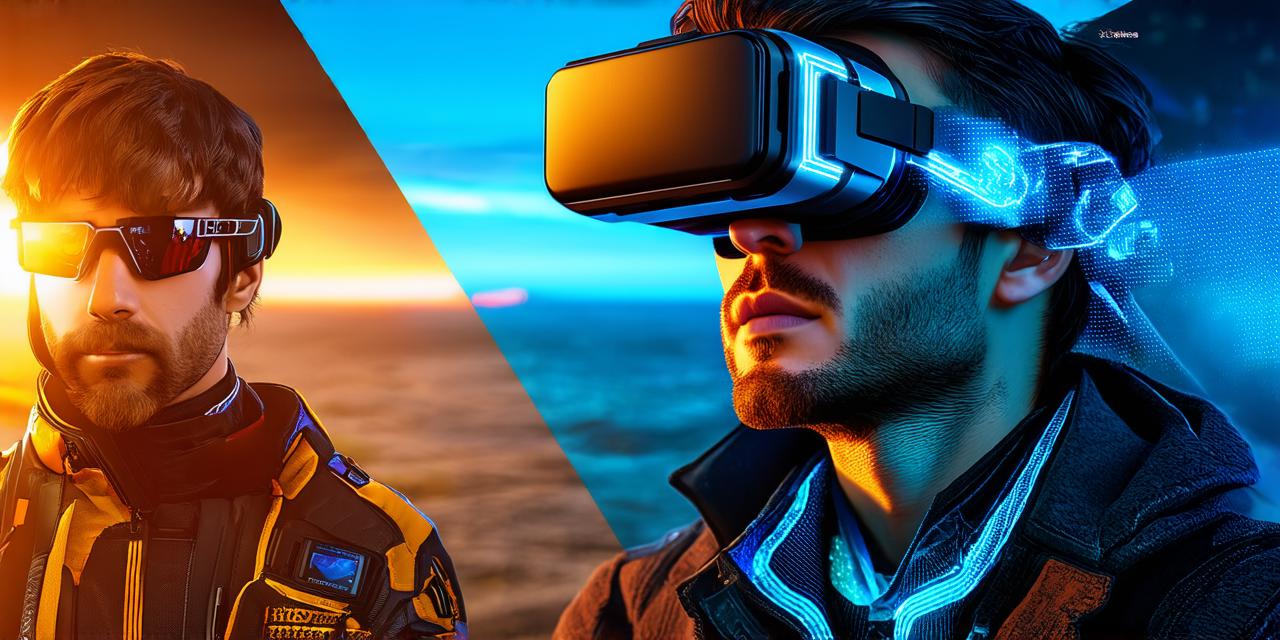
What sets augmented reality apart from virtual reality?
Introduction:
Augmented reality (AR) and virtual reality (VR) are often used interchangeably, but they are two distinct technologies. AR is the superimposition of digital information onto the real world, while VR creates a completely artificial environment for the user to experience.
What is Augmented Reality?
AR is the technology that overlays digital information, such as images, videos, and animations, onto the real world. This digital information can be interacted with, allowing users to engage with it in a more immersive way. AR has been used in various industries, including gaming, marketing, education, and healthcare.

What is Virtual Reality?
VR, on the other hand, creates a completely artificial environment for the user to experience. It uses sensors, headsets, and controllers to track the user’s movements and create a 3D space that the user can interact with. VR has been used in industries such as gaming, entertainment, and education.
Use Cases:
One of the main differences between AR and VR is their use cases. AR is best suited for real-world applications, where digital information needs to be overlaid onto the physical world. For example, in marketing, AR can be used to create interactive product demonstrations or virtual try-on experiences. In education, AR can be used to enhance the learning experience by providing students with interactive models of complex concepts.
On the other hand, VR is best suited for applications where a completely artificial environment needs to be created. For example, in gaming, VR provides an immersive gaming experience that transports the player into a virtual world. In education, VR can be used to simulate real-world scenarios, allowing students to practice skills in a safe and controlled environment.
Advantages:
AR has several advantages over VR. One of the main advantages is its ability to integrate with the real world, making it more practical and useful for everyday life. AR can also be used in a variety of settings, from smartphones to smart glasses, making it accessible to a wider audience.
Another advantage of AR is its ability to provide contextual information. By overlaying digital information onto the physical world, AR can provide users with real-time information that is relevant to their surroundings. This makes AR particularly useful in fields such as healthcare and manufacturing, where workers need to access information quickly and efficiently.
Limitations:
AR also has some limitations compared to VR. One of the main limitations is its ability to provide a fully immersive experience. While AR can be very engaging, it still requires users to remain aware of their physical surroundings. This can make it difficult to fully immerse oneself in the digital environment.
Another limitation of AR is its potential for distraction. Because AR overlays digital information onto the physical world, it can be easy for users to become distracted by the virtual elements. This can make it difficult to maintain focus on real-world tasks.
Conclusion:
In conclusion, while AR and VR are often used interchangeably, they are two distinct technologies with different use cases, advantages, and limitations. AR is best suited for real-world applications that require digital information to be overlaid onto the physical world. VR, on the other hand, is best suited for applications where a completely artificial environment needs to be created. While both AR and VR have their advantages and limitations, they are both powerful tools that can be used to enhance our interactions with technology.
FAQs:
1. What sets augmented reality apart from virtual reality?
AR is the superimposition of digital information onto the real world, while VR creates a completely artificial environment for the user to experience.
2. What are some use cases for AR?
AR is best suited for real-world applications, where digital information needs to be overlaid onto the physical world. Examples include marketing, education, and healthcare.
3. What are some use cases for VR?
VR is best suited for applications where a completely artificial environment needs to be created. Examples include gaming, entertainment, and education.
4. What are some advantages of AR?
AR has several advantages over VR. One of the main advantages is its ability to integrate with the real world, making it more practical and useful for everyday life.


